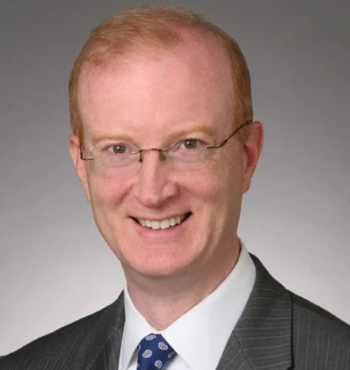Regulating Software As A Medical Device Will Take Paradigm Shift, Former FDA Chief Counsel Says
Executive Summary
Sidley Austin partner and former FDA Chief Counsel Jeff Senger told Medtech Insight that the FDA’s software pre-certification program will need to clear manufacturers, as well as software itself.
Evidence is mounting that keeping up with software used as medical devices (SaMD) will require assessing manufacturers as well as their products.
Last month, the US Food and Drug Administration published a report on the software pre-certification pilot that it had launched in 2017. After working with nine software manufacturers, the agency discovered that its current regulatory pathways were not feasible for keeping up with the SaMD innovation.
The agency proposed a paradigm shift in the regulation of SaMD. The new scheme would involve allowing manufacturers who meet certain quality and safety standards to issue updated software without an FDA OK, effectively “approving” manufacturers as well as their products. (Also see "Software Pre-Certification Program Highlights Needs For Legislative Change, FDA Says" - Medtech Insight, 27 Sep, 2022.)
 Sidley Austin partner and former FDA Chief Counsel Jeff Senger.
Sidley Austin partner and former FDA Chief Counsel Jeff Senger.
“The paradigm that FDA is exploring for software is to focus on the manufacturer,” explained Jeff Senger, Sidley Austin partner and former Chief Counsel for the FDA under the Bush and Obama administrations, in an interview with MedTech Insight.
This wouldn’t eliminate the review of products, but “would augment it with a new paradigm focus on manufacturers in which [the FDA] would certify the ability and trustworthiness of the manufacturer to offer software updates, without requiring individual review by the FDA of every version,” he said.
The idea is a “revolutionary one,” Senger added.
“If this software manufacturer shows that it is capable of monitoring performance of a software in the marketplace and adapting it carefully and responsibly, FDA would defer its regulation and permit manufacturers to make some changes without individual product review,” he said.
The reviews are done through excellence appraisals in another shift from traditional inspections. These appraisals go over the processes by which manufacturers create updates to their software, in addition to initial device production.
As a result of these inspections, the hope is that the FDA will invest in the “trustworthiness” of a manufacturer for future product development and grant precertification, Senger explained.
Outgrowing The Medical Device Amendments of 1976
Software has presented a particular challenge to the FDA. Its original medical device regulatory authority was largely drafted in 1976, when the Medical Device Amendments were added to the Food, Drug & Cosmetics Act.
“Back in the early days, people used to talk about medical devices as things that made a thud when you dropped them,” Senger explained. “When software started being used more and more in the therapeutic product category, FDA found itself having to use regulatory authorities that were not drafted with software in mind.”
Current FDA regulations require the agency to sign off every time there is a change that could affect a device’s safety and effectiveness.
It’s not feasible for the FDA to re-approve SaMD every time it needs an update because software can be updated almost instantaneously, unlike traditional physical devices. These old regulations can present delays that “can hinder patient care,” Senger said.
Waiting For Language On Software Regulations
Senger praised FDA’s ability to “get in front of the problem” with the pre-certification program.
“They are clearly devoting resources and good thinking, to how to move forward and appropriately regulate these, these products,” he said. However, he was “disappointed to see in the recent report that FDA still has not proposed particular statutory language.”
The report alluded to the need for a new regulatory model but didn’t include specifics. Congress could pass a statue relatively quickly, but that requires language that the FDA has not drafted yet.
Senger added that the release of the report coincided with the 2022 Medical Device User Fee Amendment (MDUFA V), which he said would have been an appropriate time to propose its ideas to legislators.
“[The FDA has] a good outline of where they want to go… I'm hoping that FDA will come forward with specific proposals, give industry an announcement in the Federal Register, let industry comment, and then move forward with them,” Senger said.
